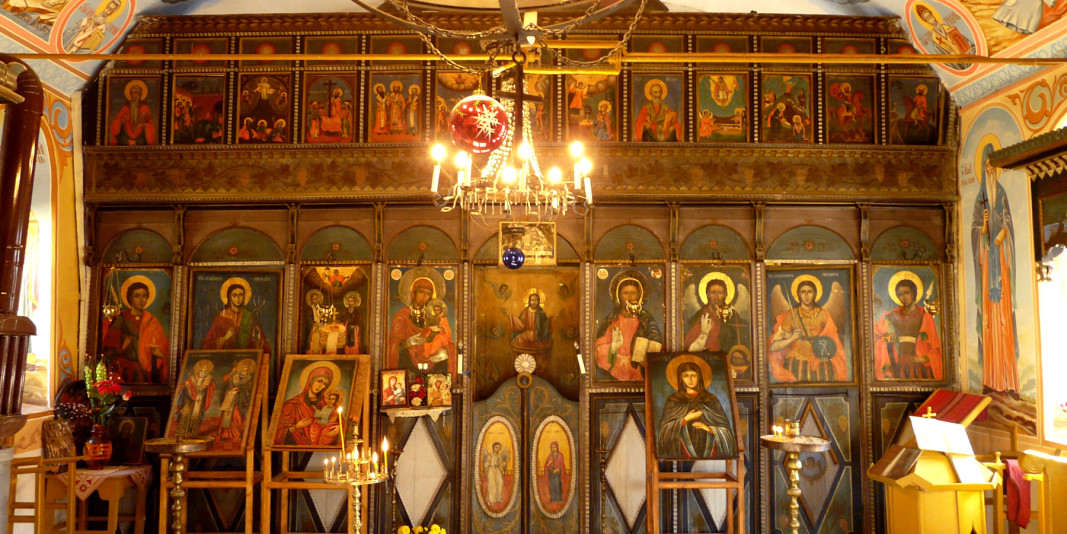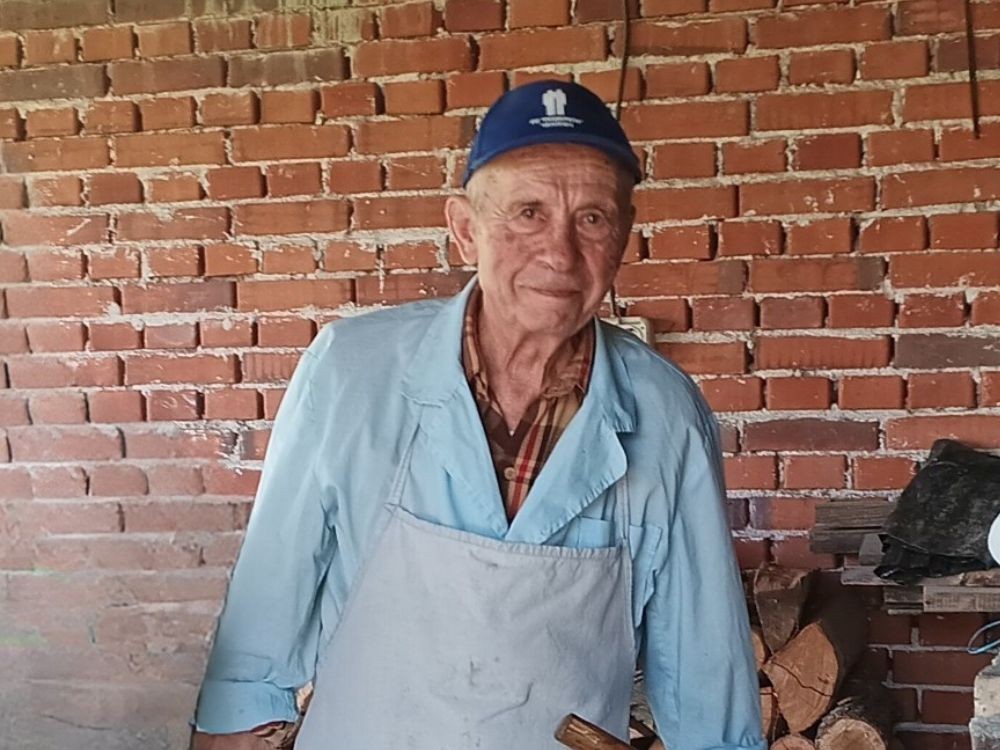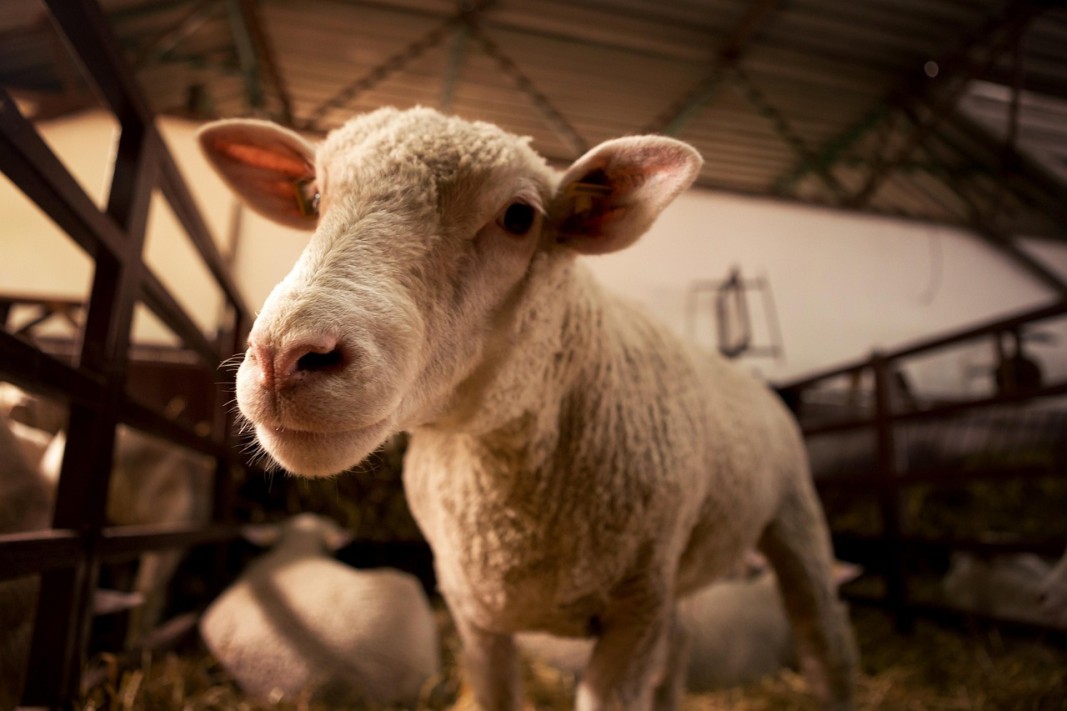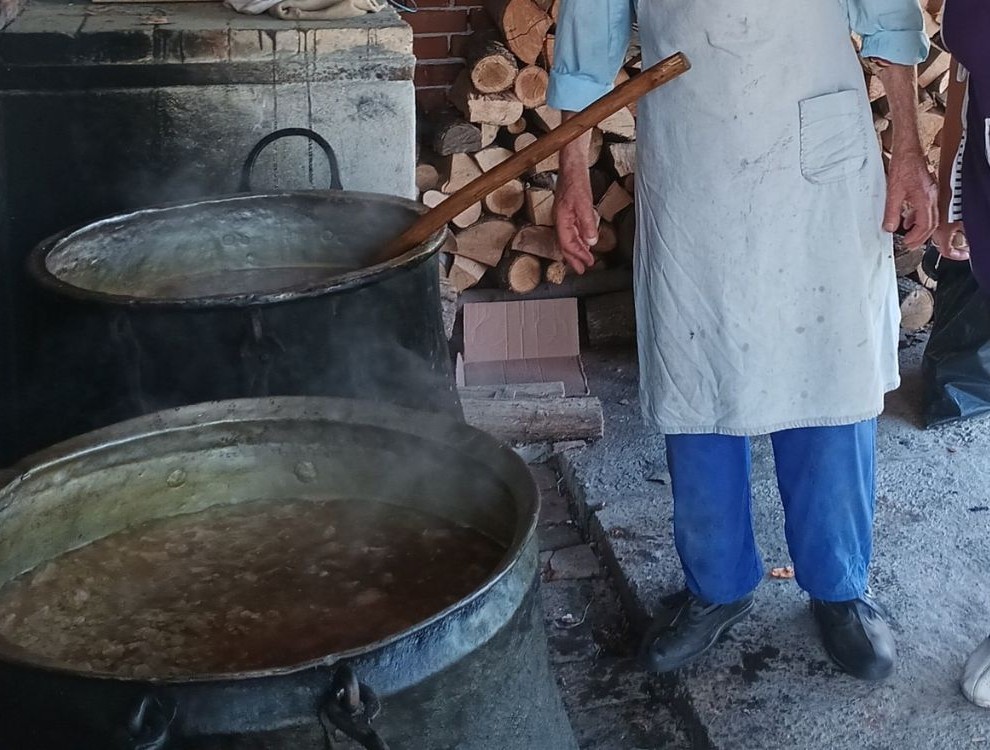According to Bulgarian Orthodox tradition, it is customary on major Christian feast days to make a voluntary offering known as kurban. In general, this involves the distribution of food among Christians, which has a special prayerful purpose. Theologians explain that the roots of this tradition go back to Old Testament sacrifices of the time before Christ, and the word itself originates from the Biblical Hebrew. Most often, kurban is handed out on the patron saint's day of churches and monasteries. Some Christians offer a kurban as a sign of gratitude for overcoming personal misfortune or as a prayerful act for the health and well-being of their family. Kurbans prepared during fasting periods are made only with meatless foods. In all cases, the food may only be distributed after a prayer and blessing from a church official.
A major feast day like May 6 (St. George’s Day) does not pass without preparations for a kurban in all Orthodox churches bearing the saint’s name. The food is most often prepared from lamb or mutton, as is customary for this day.

In the early morning of May 6, we go to St. George Chapel, located on the outskirts of the Sub-Balkan town of Pirdop. Dozens of people gather there on Gergyovden (Saint George’s Day) from nearby towns and villages. The tradition has been observed here for centuries. This is evidenced by an old votive cross left from the time before the fall of Bulgaria under Ottoman rule. Each year, two sheep are donated for the preparation of a sacrificial meal to mark St George’s Day.
Iliya Garkov is one of the most respected people in the town of Pirdop. He is 91, but is still able to help with the preparation of the meat and the making of the kurban meal. Even now, he leads a team tasked with preparing the most aromatic and delicious kurban for the worshippers.

''I also help people when they make private kurbans for health. For as long as I can remember, we've always made mutton kurban in the yard of the chapel, and many people always come", said Grandpa Iliya and added:
''The sheep we use for cooking the kurban meal are already slaughtered, but back in the day, when I was young, I used to do the slaughtering myself right here in the yard", says Iliya. "I first started working at ''Rodopa'' (a meat processing enterprise that no longer exists). I worked there for 15 years, and then spent another 20 years as a butcher in a shop. When I retired, people began asking me to help them slaughter the animals. An old master butcher named Decho Brambev taught me how to butcher animals. I’ve been doing this for 21 years now."

"To make one cauldron of sacrificial meal, we need about two kilograms of homemade cow butter. It must be pre-fried so that it doesn't taste raw. Then we add onions and let them sauté in the melted butter. After that, we add flour and paprika, and once they’ve also browned a bit in the hot butter, we pour in the water and add the meat. I season the meal with garden mint and parsley right from the start. The kurban needs to simmer in the cauldron for at least four hours. You need to taste the kurban frequently to avoid over-seasoning it with salt and pepper. Anyone who wants to learn the subtleties of this craft must ask a lot of questions."

"It’s not just the spices that give flavor to the sacrificial dish- the cauldron in which the food is cooked is also important", explains Iliya Garkov.
"The kurban meal must be cooked in a copper cauldron. A dish prepared in a nickel-silver pot never tastes as delicious as one made in a copper pot. You can’t make it on a home stove—the kurban has to be cooked over a big fire so that it boils continuously. Cooking in large quantities is also one of the secrets of a good kurban. It just doesn’t turn out right in small batches. I have grandchildren and great-grandchildren, but they’re not very interested in this. For me, it was a profession which fed me for many years. I’ve been doing this since 1958", Iliya Garkov concluded.
Photos: Gergana Mancheva; Pirdop Municipality; pixabay, Selo.bg
Today, in the Radio Bulgaria studio, we welcomed Helmut Matt – a writer, radio journalist and poet, who has maintained a special connection with Bulgaria for many years. In his book "Bulgarian Impressions" and in his numerous radio broadcasts, he..
On November 8 in Hall 11 of the National Palace of Culture, Bulgaria’s best masters and artisans will be awarded for the third time. The founder and driving force behind the “Creator of the Year” initiative is Nikolay Traykov, who visited “Radio..
Sofia has a new spot for curious minds. Phenomena is a museum where science and art come together — a place to experiment, discover, and get hands-on with the wonders of how the world works. Rooted in the spirit of STEAM education — that’s Science,..
On 27 October, the first meeting of Action CA-24150 “Values in Turbulent Times: Navigating Social Change and Challenges (VISTA)” took place in Brussels...
In the summer of 2014, photographer Philippe Bazin and philosopher Christiane Vollaire traveled around Bulgaria, investigating a series..
The European Commission praise s Montenegro’s progress toward EU membership North Macedonia needs decisive action and reforms to begin..

+359 2 9336 661
